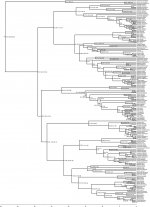In my notes, I have:
Limnocorax Peters 1854
OD: Peters 1854. [Über Limnocorax, eine unter den Wasserhühnern abzusondernde neue Gattung und die zu ihr gehörigen Arten.] Ber. Bekanntmacht. Verhandl. K. Preuss. Akad. Wiss. Berlin, Jahre 1854: 187-188.
page: 187
Included species: Limnocorax capensis (syn. nigra), L. senegalensis (syn. flavirostra), L. mossambicus
Type: Gallinula flavirostra Swainson 1837
Fixation by: subsequent designation
Fixation in: Gray GR. 1855. Catalogue of the genera and subgenera of birds contained in the British Museum. British Museum, London.
page: 151
OD of type: Swainson W. 1837. Birds of Western Africa. [2nd part.] Ornithology. Vol. VIII. In: Jardine W [ed]. The naturalist's library. WH Lizars, Edinburgh.
page: 244
Note: Gray misspelled the type species name ‘
flavirostris’ in the designation. (This does not affect the validity of the designation.) Peters 1934
https://www.biodiversitylibrary.org/page/14482995 claimed a type fixation by monotypy of "Rallus niger Gmelin (not of J. F. Miller) = Gallinula flavirostra Swainson.”
Available: yes
Family: Rallidae
corax, -acis (Latin) = κόραξ, -ακος (Greek) = raven.
Limnocorax was indicated in the OD as "ex λίμνῃ et κόραξ", thus as formed from the Greek version -- this matters little, however, as the word is exclusively masculine in both languages. It was originally treated as masculine, being combined in the OD with the masculine adjective
mossambicus.










